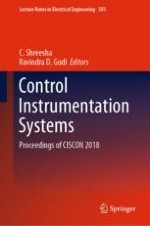2020 | OriginalPaper | Buchkapitel
FIR Filter Design Technique to Mitigate Gibb’s Phenomenon
verfasst von : Niyan Marchon, Gourish Naik
Erschienen in: Control Instrumentation Systems
Verlag: Springer Singapore
Aktivieren Sie unsere intelligente Suche, um passende Fachinhalte oder Patente zu finden.
Wählen Sie Textabschnitte aus um mit Künstlicher Intelligenz passenden Patente zu finden. powered by
Markieren Sie Textabschnitte, um KI-gestützt weitere passende Inhalte zu finden. powered by
